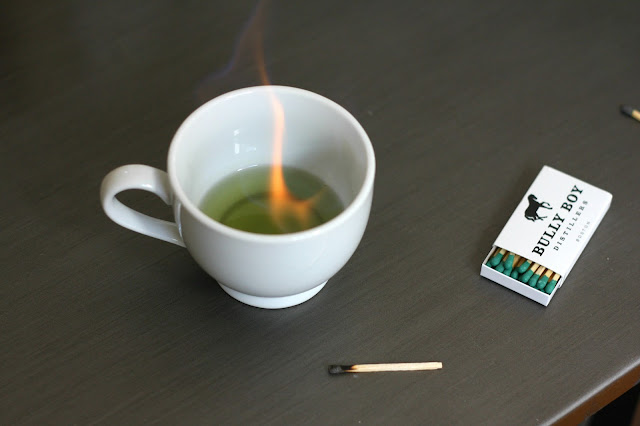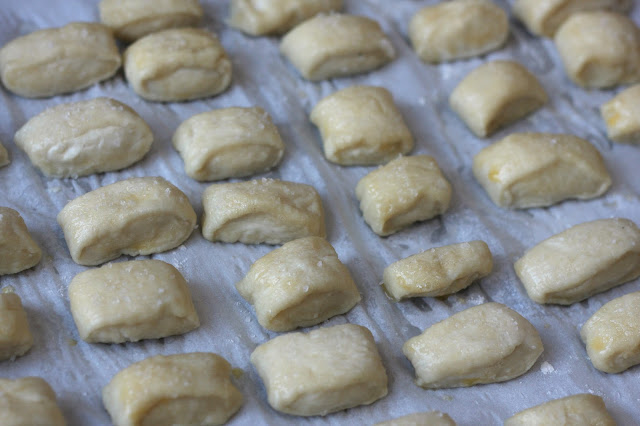Soft pretzels are one of my favorite bar snacks, but I always thought they'd be too complicated to make at home. Getting the dough to rise, achieving that perfectly browned exterior... I figured it was all better left to the experts.
Until one night last year when, alone in my apartment, I suddenly and inexplicably began craving soft pretzels. I figured I might as well look into how hard it would be to make them. And I found a recipe on
Sally's Baking Addiction that promised easy, 30-minute soft pretzels. No mixer, five ingredients. It seemed worth a shot.
A half hour later, I was gobbling down warm, delicious (albeit oddly-shaped) soft pretzels and feeling thoroughly pleased with myself and the general state of the universe. As promised, they were simple to make and really good. After a couple more attempts to make anything resembling an actual pretzel, I decided I might achieve more picturesque results making bite-sized versions.
I was skeptical about the 30-minute claim when I saw that this recipe uses yeast; usually, when you add yeast to dough, you have to let it rise, sometimes for hours (which is why I have yet to make homemade cinnamon rolls, because I just can't wait that long for my breakfast). But I guess pretzels are pretty dense, so they don't need all that time. And other than that, there's nothing inherently difficult about making yeasted dough.
You begin the recipe by combining a packet of yeast with warm water in a bowl, stirring it until the yeast is dissolved. Add some sugar and salt, and then slowly stir in flour to form a dough. It will get pretty thick at the end, so I like to add the last bit of flour as I knead it. The dough is then divided into sixths, each of which is rolled out and cut into bite-sized pieces.
One of the things that gives pretzels their unique texture and flavor is a baking soda bath before they're baked. Boiling the pretzels briefly in an alkaline solution (lye is traditionally used) changes the texture of the crust and helps them brown. This isn't a complicated process; they're just boiled for 20 seconds in a water and baking soda mixture. You can technically skip it, but they'll be much less pretzel-like.
After the bath, the pretzels are brushed with beaten egg and salted. They bake for about 10 minutes. That's all that's standing between you and perfect, warm, delicious pretzel bites.
These pretzels are really at their best when they're fresh out of the oven. They're still good once they've cooled down, but nothing beats them when they're piping hot. I like to serve them with a simple honey-mustard sauce, but there are lots of possibilities there. They're a great appetizer or snack and go really well with beer or cocktails.
Pretzel Bites
1 1/2 cups warm water
1 packet of yeast
1 tbsp. sugar
1 tsp. salt
~4 cups flour
1 egg, beaten
coarse salt
For water bath
9 cups water
1/2 cup baking soda
Preheat oven to 425 degrees. Line a baking sheet with parchment paper.
Combine the warm water and yeast in a mixing bowl and stir until yeast is dissolved. Add salt and sugar and stir. Add three cups of flour gradually, one cup at a time. The dough will become very thick. Add another 3/4 cup flour, working it in until the dough is no longer sticky. If it's too difficult to stir, you can work in this flour and up to another 1/2 cup flour while you knead the dough.
Turn the dough out onto a floured surface (I use a large cutting board for easy cleanup) and knead it, adding more flour if needed. It should be nicely elastic and not sticky. Shape it into a ball and use a large knife to cut it into six pieces. Roll each of these pieces out into a rope about 20" long. You may need to lightly moisten your hands to absorb the flour and give the dough some traction. Cut the rope into 1-inch long pieces with a knife.
Combine 9 cups of water and 1/2 cup baking soda in a small pot and bring to a rolling boil. Add the pretzel bites a few at a time and let them boil for 20 seconds before removing them with a slotted spoon or spatula. Arrange them on the prepared baking sheet.
In a small bowl, beat the egg with a whisk or electric beater until it is smooth. Brush the beaten egg onto the pretzel bites and sprinkle them with coarse salt. Bake 10-12 minutes until nice and brown.
Honey-Mustard Dipping Sauce
1/4 cup plain Greek yogurt
2 tbsp. dijon mustard
1 tbsp. honey
1 dash soy sauce
Combine all ingredients in a bowl and stir until smooth. Adjust to taste.
Pretzel recipe adapted from Sally's Baking Addiction.



























